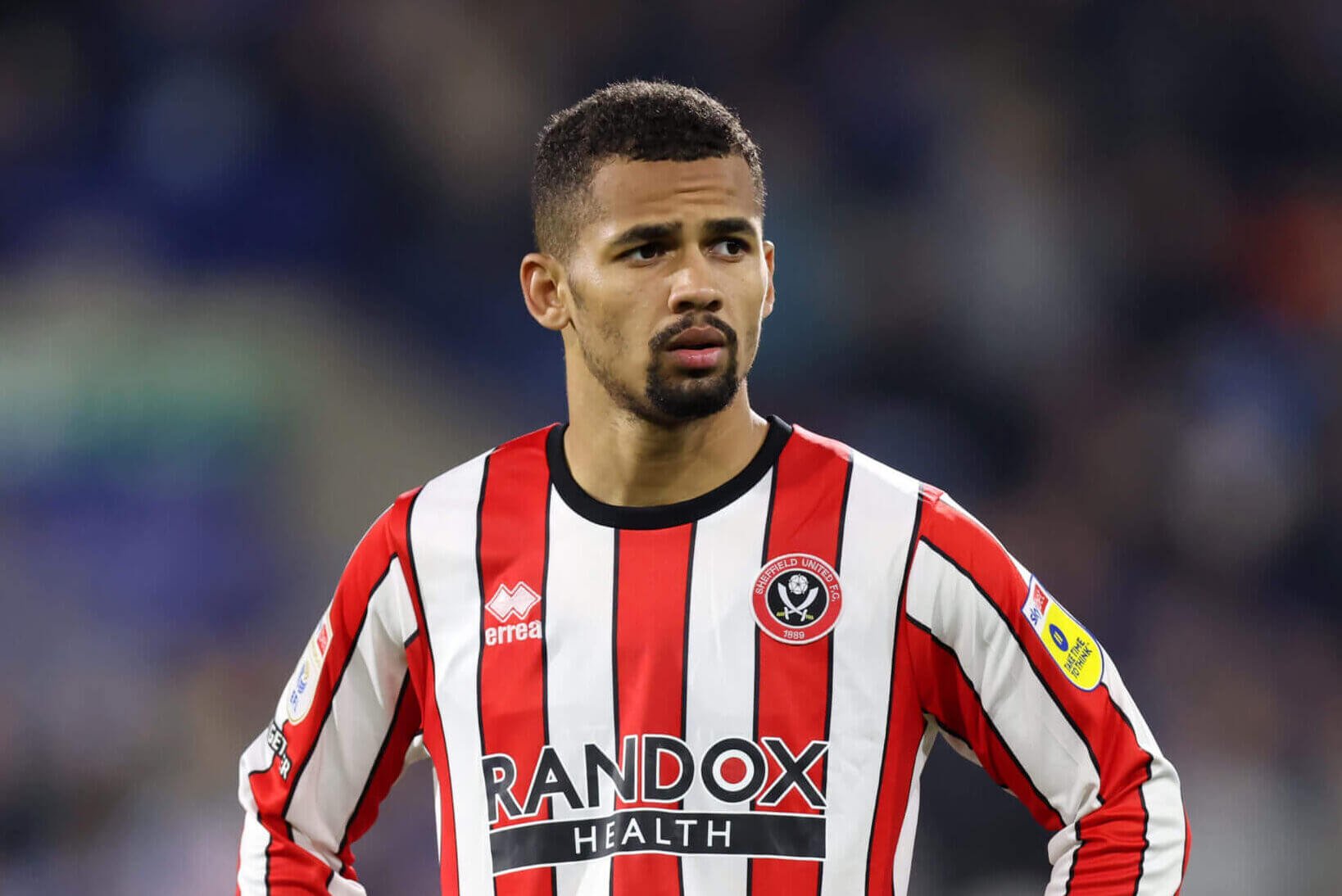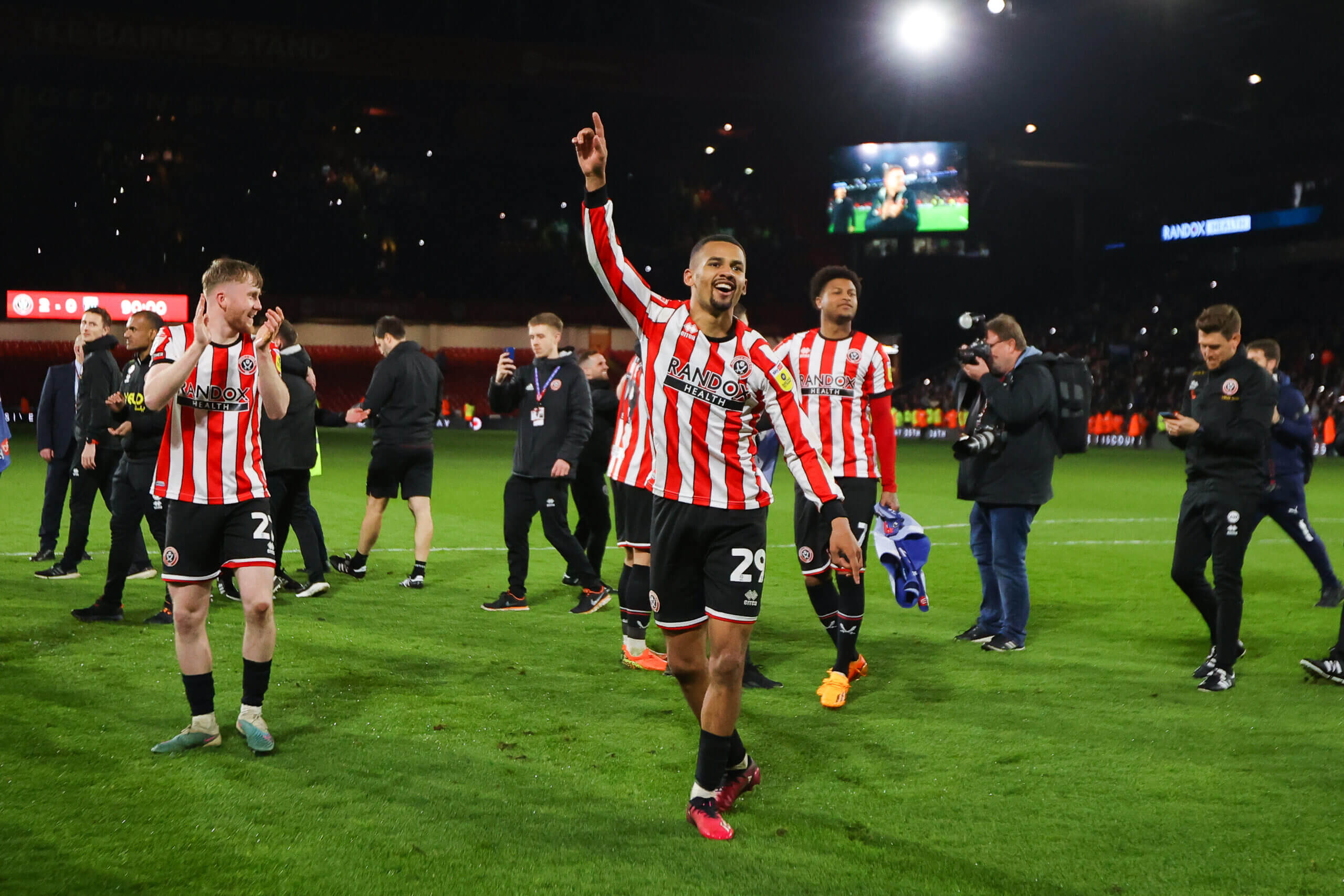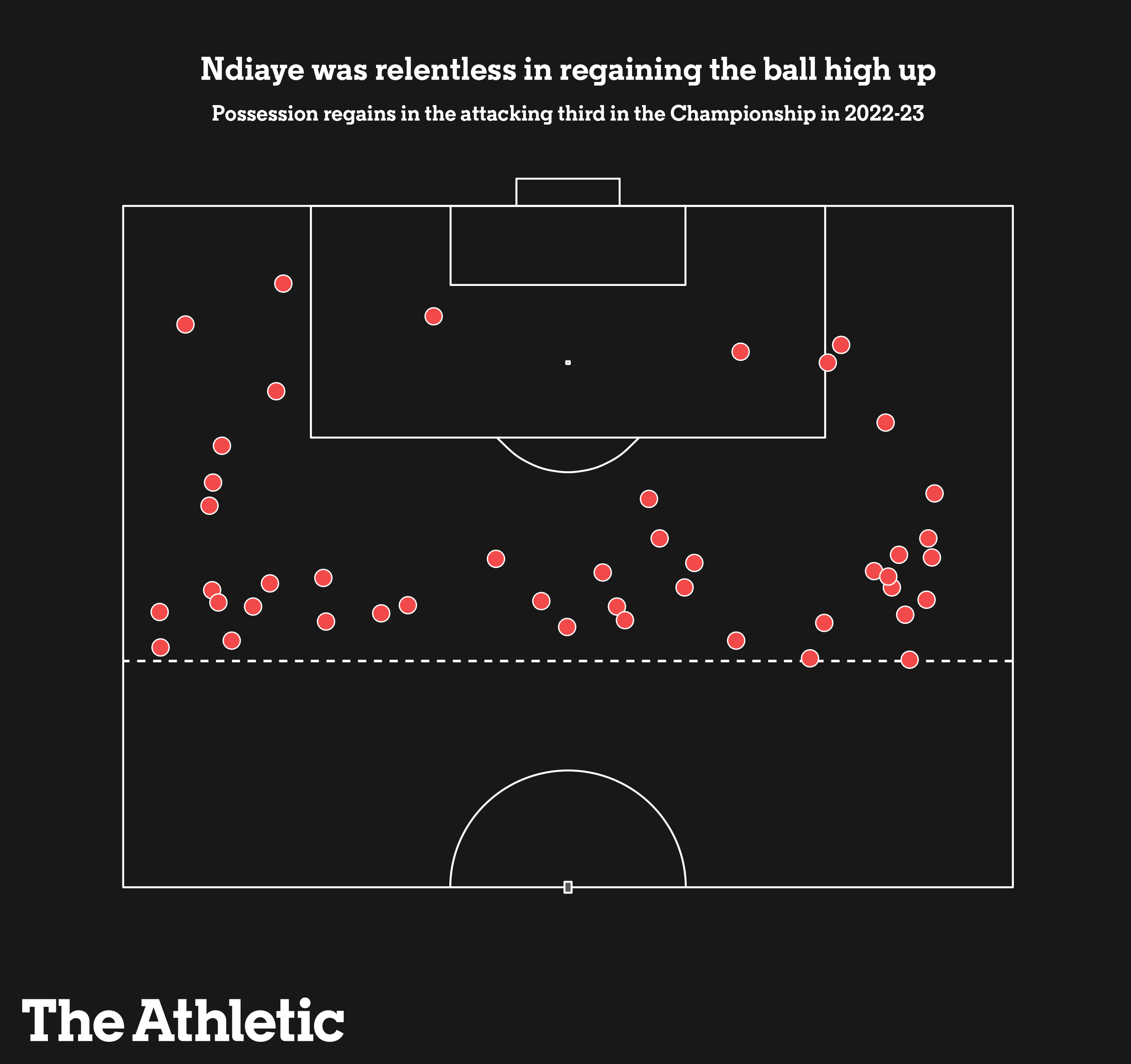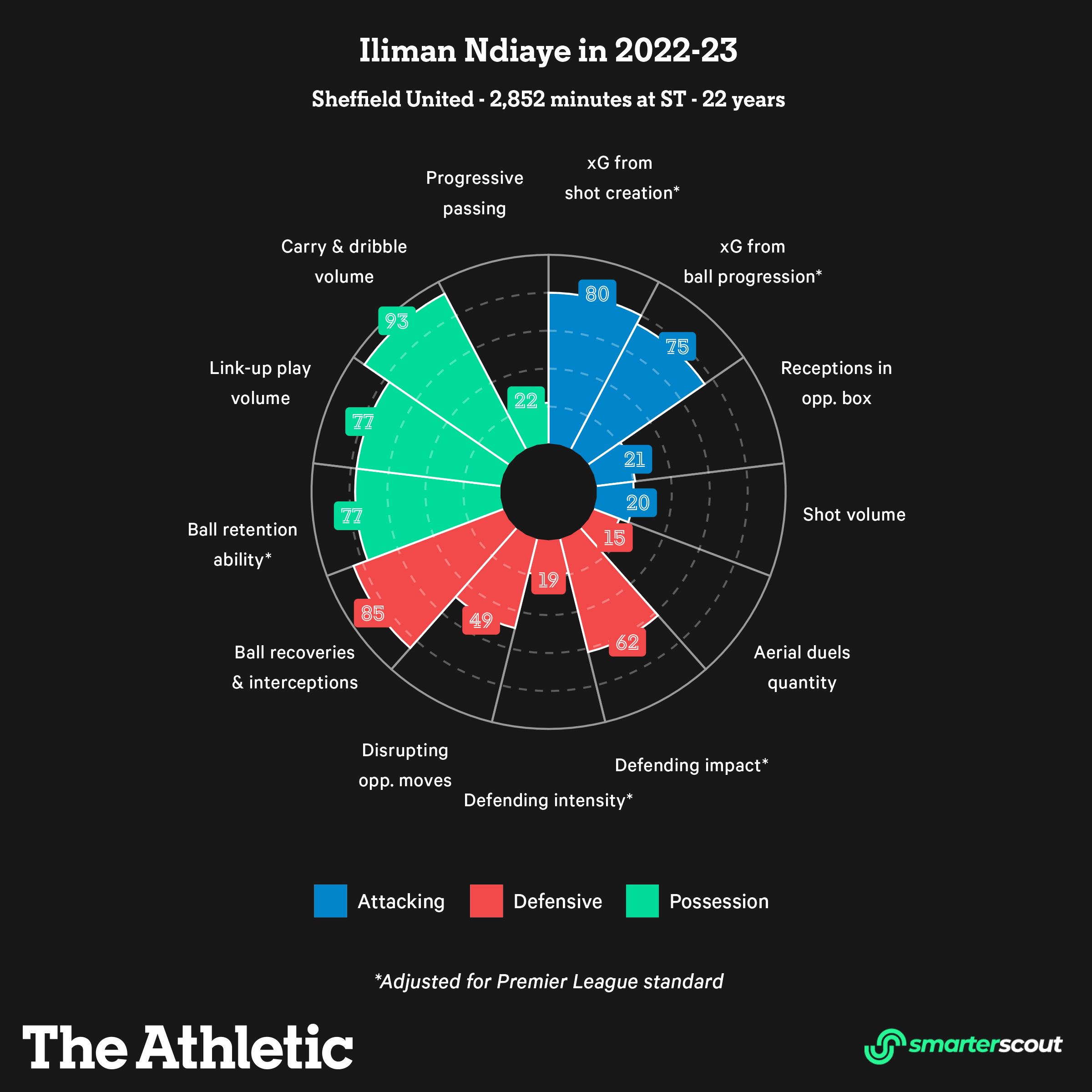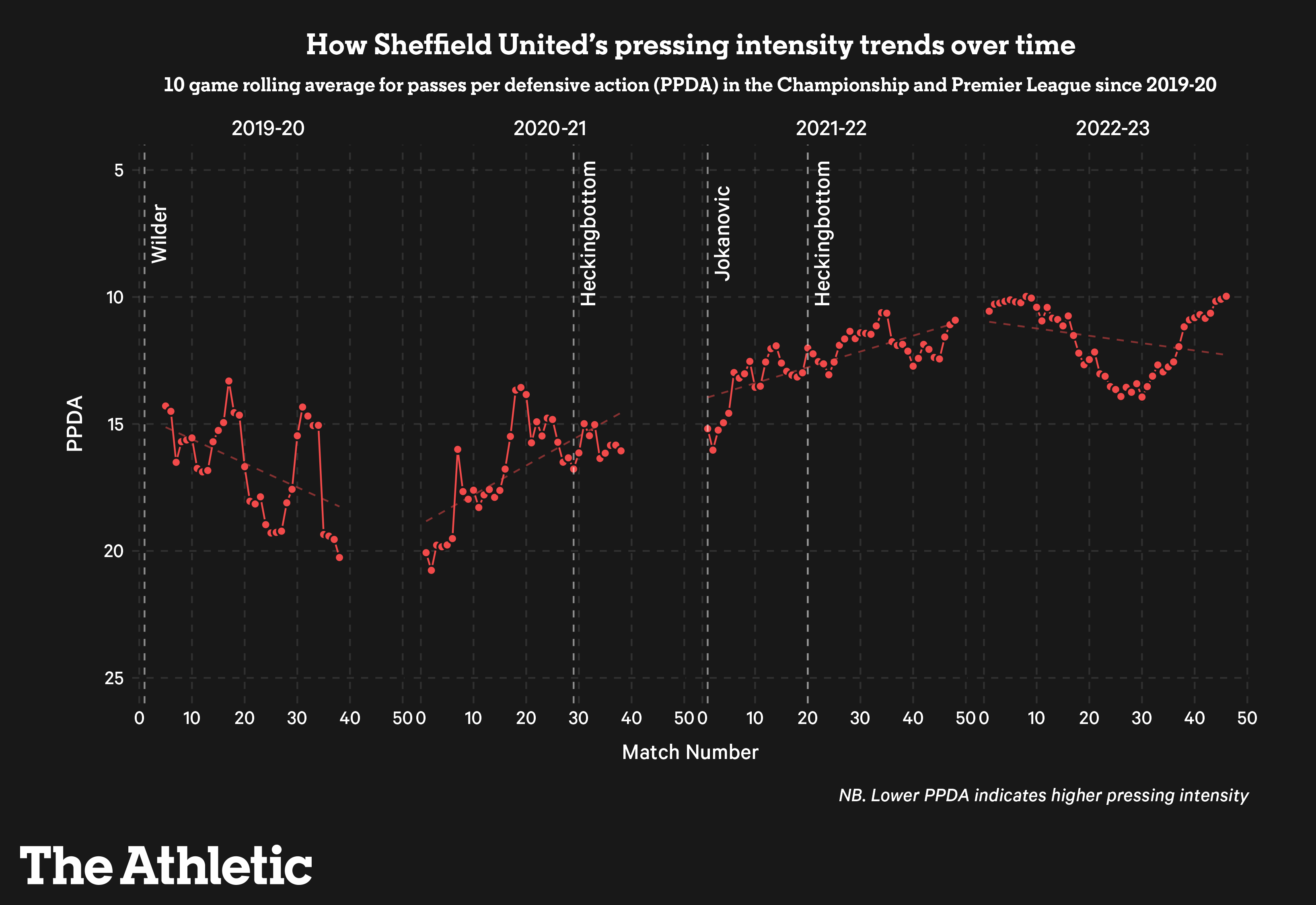When
Sheffield United line up against visitors
Crystal Palace a week today, amid faithful hope and ale-assuaged trepidation, the ghosts of goalscorers recent will linger at Bramall Lane.
Billy Sharp, with whom time was deemed to have finally caught up at age 37, will likely watch on, the tears of his promotion-parade farewell dry but the sting of departure not yet — maybe never — soothed.
Iliman Ndiaye had been poised to take over from Sharp in the No 10 shirt and test himself in the
Premier League, before an about-turn as Marseille called with drums beating and crimson flares held high.
United,
who were under a transfer embargo for three months last season because of unpaid bills, said they had no choice but to “reluctantly” part with a player who was on course to leave for free next summer.
(Photo: James Gill – Danehouse/Getty Images)
Ndiaye’s departure on the eve of the new season has prompted visceral responses and legitimate wider-reaching questions: about ambition and planning, more dwindling contracts and muddied stewardship after the dalliances with
bogus wannabe buyers.
For now, there is a slaloming, play-linking, snapping-at-heels hole in Paul Heckingbottom’s side.
Ndiaye scored goals and made them — he was involved in more than a third of United’s 73 — during a Championship season that propelled him into the mainstream via a World Cup with
Senegal in the middle of it. By the spring, he had only strengthened his status as Bramall Lane’s biggest survival hope following promotion. After managing the 90 minutes just twice in the 2021-22 second tier, he had stepped out of departed
Wolves loanee
Morgan Gibbs-White’s shadow, wriggling, with socks slouched, ravenous and relentless, through all 46 league games.
Against
Tottenham in an
FA Cup last-16 win in March last year, there was a shielding touch, a shoulder dropped this way and that, a low shot fired through disorientated bodies. Against
Blackburn in August, he went alone from halfway, feint upon feint, before applying the finish.
And yet Ndiaye’s work
off the ball was as integral as his work on it.
Playing as a second striker behind
Oli McBurnie but often dropping deep before running at opponents meant Ndiaye made space, deceiving with his body position and dribbling to open gaps.
But beyond the 112 take-ons, second-most in the division, was an insatiable appetite to regain the ball; a disdain of wasted moments or injuries feigned after fouls drawn; a simple desire to
play. “Giving up is not in my dictionary,” he said in an interview with Sky Sports last season.
No United player last season won possession anywhere close to as many times (45, McBurnie was next with 25) in the final third; the graphic above details how frequently he pounced in opposition territory, often from wide areas before driving goalwards.
His 221 recoveries, according to Opta, were almost a third more than Gibbs-White’s the previous season, more than three times McBurnie’s total last term, and the most by any forward in the 2022-23 Championship.
Sunderland’s
Jack Clarke was the only attacker in the division who made more tackles than his 49 during the last campaign.
Heckingbottom has already warned of the challenge awaiting his side without the ball now United are back in the Premier League, but the statistics behind two divergent top-flight campaigns offer a reminder of just how much their qualities out of possession — those embodied by Ndiaye — are likely to matter.
A ninth-place finish under Chris Wilder in 2019-20 was built upon defensive solidity — no promoted side in the Premier League era has conceded as few as their 39 goals — but the protective platform was laid further forward. Only relegated
Watford,
Burnley and Steve Bruce’s joy-sapping
Newcastle had less possession than United’s 42.4 per cent that season, but Wilder’s side posted top-half figures for recoveries and possession won in the attacking third. Beyond the sophisticated overloads and overlapping, they were awkward, space-squeezing, in-your-face opponents.
The following season was a tumultuous campaign that ended in the joint-earliest relegation in Premier League history. The effects of injuries, playing in empty stadia thanks to the ongoing restrictions on crowds due to the Covid-19 pandemic, and a hurried pre-season were there in the numbers: a 50 per cent rise in on-target shots faced, most goals conceded from outside the 18-yard box having allowed the second-fewest a year before, bottom-three returns this time for recoveries and regaining possession high. An increasingly passive side, in essence, allowed opponents more time and space to build attacks.
What United, still largely following Wilder’s 3-5-2 blueprint, managed to then do with Ndiaye in attack was turn a sometimes volatile press — reflective of a team who thrived off aggression and intensity — into a higher, more strategic, sustained one.
The graphic below is deceptive when it comes to short-lived Wilder successor Slavisa Jokanovic’s stylistic aberration (a smaller sample size and an adjustment for a return to Championship football means little should be read into the numbers) but it does show a largely smoother line that represents consistent execution once Heckingbottom had taken over, albeit it was happening in a lower division.
How United respond to a post-Ndiaye problem will only become clearer in the weeks ahead. Heckingbottom has voiced expectation rather than hope that money is reinvested before the September 1 deadline.
He was already dealing with a lack of attacking options because of injury — youngsters
Daniel Jebbison and
Will Osula will have to be called upon — and a midfield that is thinner following the return of last season’s loanees Tommy Doyle and James McAtee to parent club
Manchester City. The squad overall is, as Heckingbottom admitted to local radio hours after Ndiaye’s exit was confirmed, “a long way off”.
The hope is that
Anis Slimane, a 22-year-old Tunisia international midfielder signed from
Denmark’s Brondby, will offer a box-to-box boost alongside the experience of
Oliver Norwood and
Sander Berge, and that
Benie Traore, a 20-year-old Ivorian striker from Swedish side Hacken, can be a harrying nuisance.
Both were low-cost gambles, caught in a recruitment net belatedly cast wider. But the step up in class from those leagues is significant and though Heckingbottom has stressed Traore’s ability to use “pace out of possession”, he has not played for a month while finalising his visa.
The onus, for now, will be on McBurnie’s hold-up play and movement, on Berge’s take-ons and work to close down passing lanes, on the ability of Norwood — with older legs this time at 32 — to win defensive duels and keep units compact.
John Egan will be relied upon to maintain the defensive line,
George Baldock to set the tempo and exert wide pressure, and
Anel Ahmedhodzic — with his eight goal involvements last season from centre-back — to offer potentially vital set-piece threat.
Ndiaye’s value to this team was as much about the tireless and the intangible as it was the trickery and the double-figure output.
For Sheffield United, absorbing the early blows of season 2023-24 will familiarly lie in a tight-knit, up-against-it collective.
